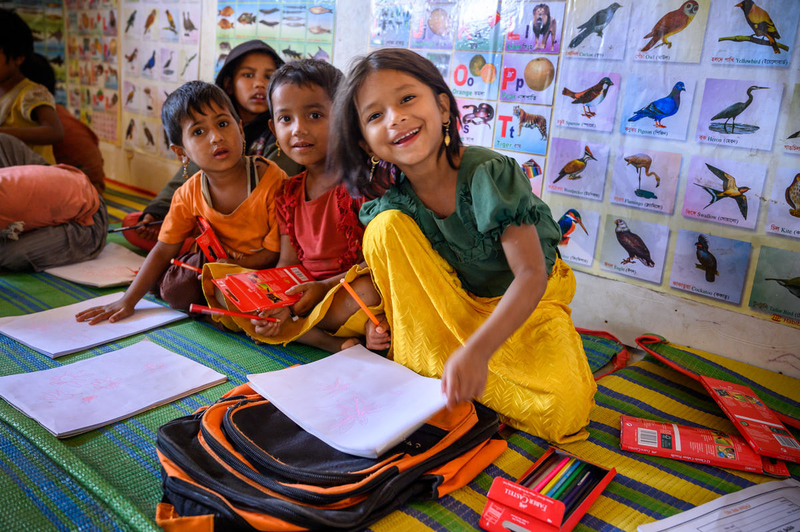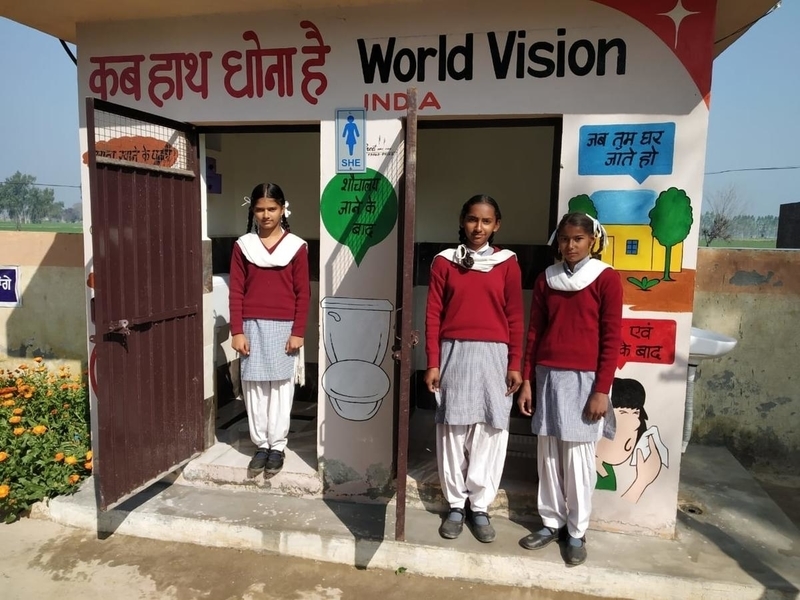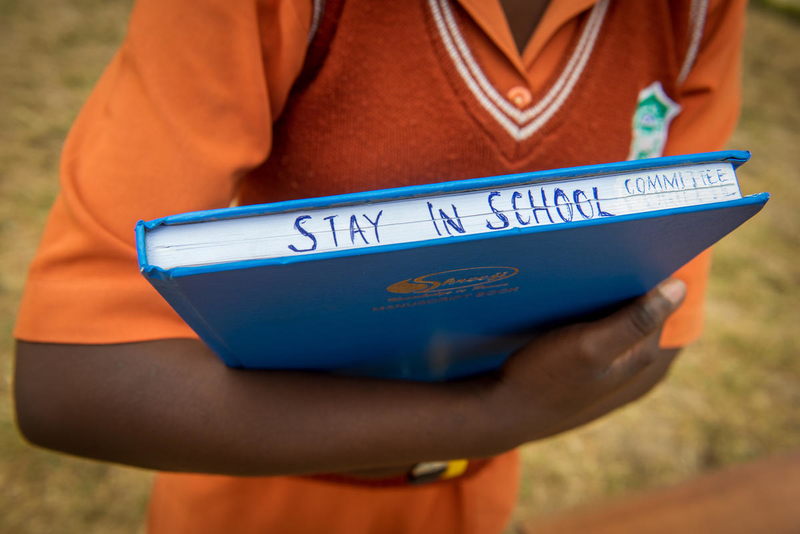Update: Good news! The Keeping Girls in School Act passed in the House of Representatives on January 28, 2020. Let’s keep progress going by asking the Senate to follow suit! Ask your senator to support the bill that breaks down barriers to girls’ education.
The Keeping Girls in School Act … it’s a promising name, but can it do what it promises? Even the best legislation can’t magically remove all the challenges girls face when trying to access quality education. But what this legislation can do is help bridge the education gap between boys and girls and break down some of the barriers that keep girls out of the classroom.
The Keeping Girls in School Act (KGISA) helps empower girls to access quality education, which in turn contributes to economic growth, improved gender equality, and reduced violence around the world. It’s a long-term strategy with serious payoffs. (Here are 10 things that happen when girls stay in school.)
Here’s why we need KGISA, what it aims to accomplish, and how it will work if passed.

WHY we need the Keeping Girls in School Act
About 130 million girls around the world are not in school, and even those that are in school may not be getting enough education to attain basic literacy and math skills. Girls between ages 10 and 19 are three times more likely to be kept out of school than boys, especially in countries affected by conflict.
The are several reasons for this gap listed on the bill:
- Harmful societal and cultural norms;
- Lack of safety at school or traveling to school, including harassment and other forms of physical, sexual, or psychological violence;
- Child, early, and forced marriage;
- Female genital mutilation;
- Distance from a secondary school;
- Cost of secondary schooling, including fees, clothing, and supplies;
- Inadequate sanitation facilities and products available at secondary schools;
- Prioritization of boys’ secondary education;
- Poor nutrition;
- Early pregnancy and motherhood;
- HIV infection;
- Disability;
- Discrimination based on religious or ethnic identity; and
- Heavy workload due to household tasks.

But the effort to help girls stay in school is worth it — for the girls themselves, for their communities, and for the world. Girls who stay in school longer are more likely to live longer, marry later, and have healthier children. Educated women are more likely to earn income to help support their families, and even just one year of secondary school can boost a girl’s future earning potential by up to 25 percent. This helps the whole family; studies have shown that women invest about 90 percent of their earnings back into their families.
Improved earnings contribute to economic growth for a woman’s community and nation, and educated women are more likely to be civically engaged, leading to a broader array of solutions to conflicts. Improved education for girls and boys helps nations lower their risk of violence and instability, creating a better world for all.

WHAT the bill will do
Wanting to make a change and creating an effective plan for doing so are two different things. The bill will create change by improving coordination, using proven strategies, and rigorously monitoring progress to accomplish its goals.
Specifically, USAID (the United States Agency for International Development) would plan and direct activities that address the barriers girls face in accessing quality education using these guidelines:
- To use the U.S. strategies that already exist to empower adolescent girls worldwide with education
- Without authorizing new funds, to integrate new technologies and apply research-based approaches to promote inclusive, sustainable education for adolescent girls
- To support a responsible transition to education systems that are sustainably financed by domestic governments
- To direct USAID to release at least one (we hope more!) projects that address one or several of the 14 barriers named in the legislation

HOW the Keeping Girls in School Act would take action
If passed, the activities the bill puts into place will begin no later than 180 days after it’s passed, and those activities will be implemented by USAID and other development experts with experience in education (yes, like World Vision!). The activities will:
- Work to measurably close the gap between boys’ and girls’ secondary education and improve the overall quality of secondary education for girls
- Look at available data through the lenses of age, gender, marital and motherhood status, disability, and students’ location to effectively address barriers and create solutions
- Implement strategies identified as effective by the Interagency Working Group for the Strategy on International Basic Education
- Coordinate with organizations that have experience in empowering adolescent girls and promoting gender equality as well as with local organizations, governments, and the beneficiaries themselves
- Be rigorously monitored and evaluated via progress reports to Congress regarding the activities and their progress starting one year after passing and every 180 days thereafter

Committing to girls’ education
It would be wonderful if there were a magic wand that could instantly address gender inequality in education around the world, but significant, long-term change takes dedicated, long-term efforts. That’s why World Vision supports bipartisan legislation like the Keeping Girls in School Act that remove barriers to people overcoming poverty and helps create the world we’re working toward: a world where every child experiences life in all its fullness (John 10:10).
When world leaders take steps to address deep-seated global issues, it inspires others to take action and strengthens the efforts of local governments. And when the world works together to remove barriers to things like clean water, health, opportunity, and education, people are empowered to lift themselves out of poverty and help others do the same.
ACT NOW:
Top photo: Seventeen-year-old Sarah Nakimbungwe holds a book that shares her sentiments – Stay in School. (©2018 World Vision/photo by Laura Reinhardt)



5 Comments